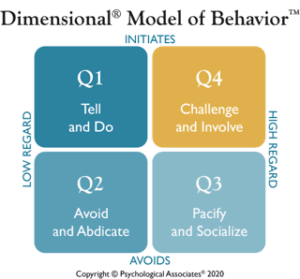Sugarcoating
Have you ever had employees who sugarcoat bad news? This works well for the moment — the boss is pleased and everything sounds great. However, this can be disastrous down the road when a sugarcoated issue mushrooms into something worse. If only we could have known about and addressed these issues sooner! This case study is about being direct. How do you get a people-pleasing employee to be more straightforward?
The Situation
Jane is a project leader at a food processing company. Her team has developed a new warehousing system to improve distribution to buyers.
Ben is facilitating the transition. A former salesperson with the firm, he’s good with customers. Jane had set a start-up date based on Ben’s estimate of the time needed to sell in the new system to key accounts.
Missing Deadlines
However, Ben was unable to complete his round of client calls by the deadline. Now, the start-up date must be rescheduled, even though this throws off the timing of other events. Jane asks Ben about it:
Jane: You told me we would have no trouble completing this job by the 15th.
Ben: (Sheepish) I know, I’m sorry. Hey, I thought it would be possible.
Jane: Possible? You just about guaranteed it! When you realized it was probably not going to happen, why didn’t you tell me?
Ben: Look, I know you’ve worked really hard, and the company wanted to change over quickly. I didn’t want to be the wet blanket if there was a chance to make the deadline.
Jane: Ben, our team was on the line to be ready on time. You should have been more realistic or come to me.
Ben: Well, I didn’t want to let you down.
Not Straightforward
When direct reports or colleagues want to be agreeable, we usually don’t consider that as a managerial problem. However, not being straightforward can lead to a lack of candor and getting bad information. How do you work with a team player like Ben on being direct?
How to Be More Direct

Q4 Strategy for Q3 Behavior
Q3 overly-friendly behavior emphasizes the positives and downplays the negatives. None of us likes it when we are the bearer of bad news, causing our boss or a colleague to shoot angry looks and frustrated responses our way. To maintain a pleasant atmosphere, Ben will be especially reluctant to volunteer disagreeable information. If Jane doesn’t have a strategy for working with him, their relationship with be unreliable and less effective.
Creating a Climate for Open and Honest Communication
Jane needs to develop an accepting climate, where Ben can feel comfortable reporting problems and discussing potential difficulties. She should keep reminding him that she needs his best and most honest thinking. She could make a benefit/consequence statement to indicate that they both want to avoid any future unpleasantness. For example: “Ben, if your projection is accurate, our project will get off to a great start. On the other hand, if we miss the target, it will drag us down right off the bat. How can I help in meeting the deadline?”
Two More Appropriate Probes
Other tools for Jane in helping Ben be more comfortable being direct are closed-end probes and summary statements. While maintaining a relaxed tone of voice, she can probe to be sure his time estimate is realistic: “Will you be able to see everyone you need to in that time? It’s summer. How will clients who may be away on vacation affect this deadline?”
Getting the Other Person to Summarize
After helping Ben to focus on making a mindful estimate instead of social concerns, Jane can summarize to get his commitment. “So, Ben, you’re saying you can meet with all of these accounts by . . . ?” Rather than respond with what she wants to hear, he is more apt to be realistic. Again, the key is developing an atmosphere in which candor will not have negative social consequences.
Beyond Being Direct
Now that you have some strategies for getting an overly agreeable person to be more direct, here are additional resources that you may find useful.
If you would like to learn more behavioral strategies , check out our Learning for Leadership page. You’ll find additional case studies on how to handle overly agreeable behavior, as well as other types of challenging behaviors at work. If you work with a difficult person, our behavior questionnaire provides actionable suggestions for more effective outcomes. And, of course, be sure to read our Leadership Through People Skills book .
If you are ready to take action and put these skills into place at work, our leadership development page has a bevy of options ranging from leadership workshops (online or classroom), coaching, 360˚ feedback, leadership potential assessments, and more.
Finally, to keep up to date with new leadership ideas and upcoming events, be sure to subscribe to our monthly newsletter.













